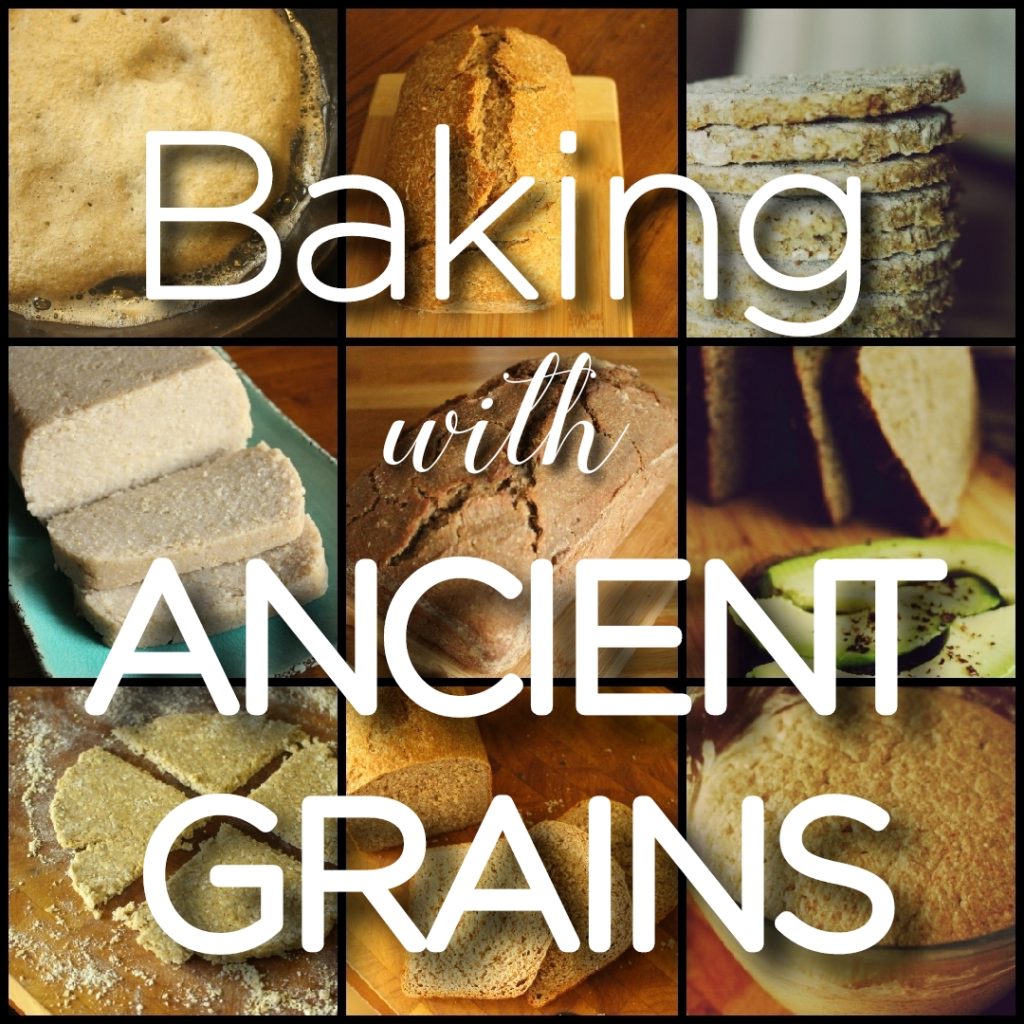Rolled oats, ubiquitous in our modern culture, didn’t exist 150 years ago. Yet oats have been eaten for many centuries. Our ancestors, instead of consuming rolled or flaked oats, stone-ground their grains, creating ‘meal’ (aka flour) of different grades.
What is oatmeal?
In the UK, which has a long oat-eating tradition, this meal, made from oats, is called oatmeal. The use of the word oatmeal to describe uncooked stone-ground oats often causes confusion with American English speakers for whom oatmeal is a dish of rolled oats cooked and eaten for breakfast. You can read about the differences between these two terms and more about oatmeal in my article The Difference Between Oatmeal and Rolled Oats.

Stone-ground oats, known as they are in the UK, as oatmeal, come in various grades – fine, medium and coarse (or pinhead). Oats ground this way have been used, historically, to create a huge variety of dishes, from porridges, to flatbreads, steamed savoury puddings, sausages and stuffings.
Get three traditional British oat recipes in my Heritage Oat Collection. Enter your details below and I’ll send it to your inbox.
Why use oatmeal?
I always have a bag of oatmeal in my own kitchen. I create Traditional Scottish Oatcakes, use it for tasty hot breakfasts and often coat meat or fish with it. I prefer the flavour and working properties of oatmeal to rolled oats. Here’s why:
- All oats (except the ‘naked’ variety) have been heat-treated before they arrive in our kitchens. Shop-bought rolled oats however, have been heat-treated twice, a process which causes further nutrient and flavour loss. I find the once-treated oatmeal to be tastier than rolled oats.
- Medium oatmeal has more of a ‘bite’ than rolled oats. In porridge (the British English word for oatmeal) this is really satisfying and when included in a oatcake dough the result is crisper and crunchier than rolled oats.
Why grind your own oatmeal in a home-mill?
In the UK, where I live, it is possible to buy commercially-produced oatmeal. But that’s not true everywhere. Readers of my blog and listeners of my podcast living in other parts of the world who wish to recreate my recipes often find it hard to source stone-ground oats.
(If you must buy a commercial oatmeal, the USA has a few options: Bob’s Red Mill produce oatmeal and sell it under the name ‘Scottish Oats’ and ex-pat focused food sites often import it from the UK)
I am a strong advocate of home-milling, buying virtually all my grains whole and using a Mockmill 100 to grind them into flour just before I bake bread. Purchasing the mill and moving from shop-bought flour to home-milled transformed my bread-making – making it cheaper, fresher, tastier and more fulfilling. Why would I not extend those results to oats?! I started by rolling my own oats, using a manual roller mill and, since then, have moved onto creating the traditional British ingredient – oatmeal – too!
I’m here to share what I’ve learnt and guide you through creating both fine and medium oatmeal from the whole oat groats in your own kitchen.
Why you’d want to process you own oats from whole oat grains at home, rather than buying shop-bought oats:
- You can make oatmeal – stone-ground oats – which is difficult to source outside of the UK
- It’s cheaper to buy oat grains in bulk and home-mill
- The resulting oat dish will be fresher, it’ll taste better and it will have more nutrients
- You can start with whole ‘naked’ oats which have not been heat-treated, therefore obtaining a truly raw oat

How to Make Stone-Ground Oats (Oatmeal) in a Mockmill
Equipment
Mockmill
This process can be replicated with other grain mills, but I have only been able to test on a Mockmill.
Sieves
I use a 1mm sieve (size 18 in the USA) to create fine oatmeal and a 2 mm sieve (size 10 in the USA) to create medium oatmeal.
If you only wish to generate fine oatmeal it is fine to have solely a 1 mm sieve. If, however you wish to generate medium oatmeal you will need to have both the sieves (in order to sieve out the fine oatmeal from your desired medium oatmeal).
Why use sieves?
I’m often asked why I don’t just grind the oats and use everything that comes out of the mill. I have tried this. Whilst it tastes good, it does not replicate traditional British oatmeal. When you grind oat grains on, for example, a medium grind, you end up with a mix of relatively thick pieces of oat and a lot of very fine flour. This mix, if made into porridge, will have a much more cement-like texture (because of the very fine flour) than medium oatmeal. Using sieves, it’s easier to grind more thickly and sieve out the smaller particles.
Directions to create both fine and medium oatmeal using a Mockmill
In both of these cases, I start with around 130g (depending on your grain size, around 1/3 cup) of whole oat grains.
Grinding process to optimise fine oatmeal production:

- Grind the oats using Mockmill setting number five.
- Put the grinding results through your 1mm sieve. Don’t force the oats through the sieve, but do both agitate the sieve and use your fingers/spoon to distribute the oats over the surface of the mesh. The resulting mix collected in the bowl underneath represents fine oatmeal (with particles less than 1mm across). With this method, I am usually able to generate around 86g of fine oatmeal.
- After this, if you wish, you can additionally create some medium oatmeal by putting the oats remaining in your 1mm sieve through a 2mm sieve. The resulting mix collected in the bowl underneath represents medium oatmeal (with particle between 1mm and 2mm across). With this method, I am usually able to obtain 32g of medium oatmeal.
- You will be left with around 14g of large pieces of oat in your sieve.
The video below is of commercially-produced fine oatmeal. This is what you’re aiming for:
Grinding process to optimise medium oatmeal production:

- Grind the oats using Mockmill setting number 10.
- Put the grinding results through your 1mm sieve. Don’t force oats through the sieve, but do both agitate the sieve and use your fingers/spoon to distribute the oats over the surface of the mesh. The resulting mix collected in the bowl underneath represents fine oatmeal (with particles less than 1mm across). With this method, I’m usually able to generate around 60g of fine oatmeal, less than using the Mockmill setting number five (detailed above), which is good because here I’m trying to optimise medium oatmeal!
- Put the oats remaining in your 1mm sieve through a 2mm sieve. The resulting mix collected in the bowl underneath represents medium oatmeal (with particles between 1mm and 2mm across). With this method, I am able to generate 46g of medium oatmeal.
- You will be left with around 22g of large pieces of oat in the sieve.
The video below is of commercially-produced medium oatmeal. This is what you’re trying to replicate:
What to use these for!
- Fine oatmeal makes wonderful oatcakes!
- Medium oatmeal is really good in porridge.
- Medium oatmeal can be made into a scald and included in a bread dough.
- Medium oatmeal can be used as a breadcrumb alternative or made into stuffings.
- The large, leftover, pieces of oat can be included in porridge, but are also great decorating the top of a loaf of bread and can be used as a oat bran substitute.

What about steel-cut oats?
It’s very difficult to make steel-cut oats in a home grain mill because, commercially, this is made by shearing oats with a steel blade, a process very different to stone-milling. It is potentially possible using Mockmill setting higher than 10 and a larger sieve, but I have not tried it.
How is this better than grinding oats grains in a blender?
If you search online for how to grind oats, you will find a myriad of resources telling you to whizz up rolled oats in a blender/coffee grinder. In my experience, as well as potentially damaging your equipment (ask me how I know!) this results in a very fine, dust-like flour which is not the same as fine oatmeal or medium oatmeal.
Plus, as I explained above, rolled oats have been heat-treated twice and so are less flavourful and less nutrient-dense product. Why would you use them if you could make oatmeal yourself, freshly, from whole oat groats?
More on oats…
I know no other way of describing my relationship with oats than ‘obsessive’ I am a devotee of the grain. If you love oats too, check the other posts linked in this article or browse my oat posts and get on my newsletter – I share lots of oat information there and you’ll be kept up to date on my forthcoming book bringing the traditional oat recipes of the UK into our modern kitchens.

Bring ancient grain baking into your kitchen!
Download my free 30-page guide with five healthy and tasty 100% ancient grains recipes.


Dear Alison, Thank you for all your very helpful information 😀
Why is it necessary to use one or two sieves for the ground oats? Why not use the entire ground material without sieving?
Thanks Regina. This is a good question and one that someone else asked me just this week. I have added a section to the blog post that explains why I use sieves:
I’m often asked why I don’t just grind the oats and use everything that comes out of the mill. I have tried this. Whilst it tastes good, it does not replicate traditional British oatmeal. When you grind oat grains on, for example, a medium grind, you end up with a mix of relatively thick pieces of oat and a lot of very fine flour. This mix, if made into porridge, will have a much more cement-like texture (because of the very fine flour) than medium oatmeal. Using sieves, it’s easier to grind more thickly and sieve out the smaller particles.
I hope this helps explain.
Dear Alison,
Yes, it does. Thank you!
I was wrong to assume you use the material in the bowl below and not the one left in the sieve for your porridge 🙃
Hi Regina, I’ve made a few more updates to clarify which grinding results I use for what. Thank you for your input, it’s helped me make it clearer!